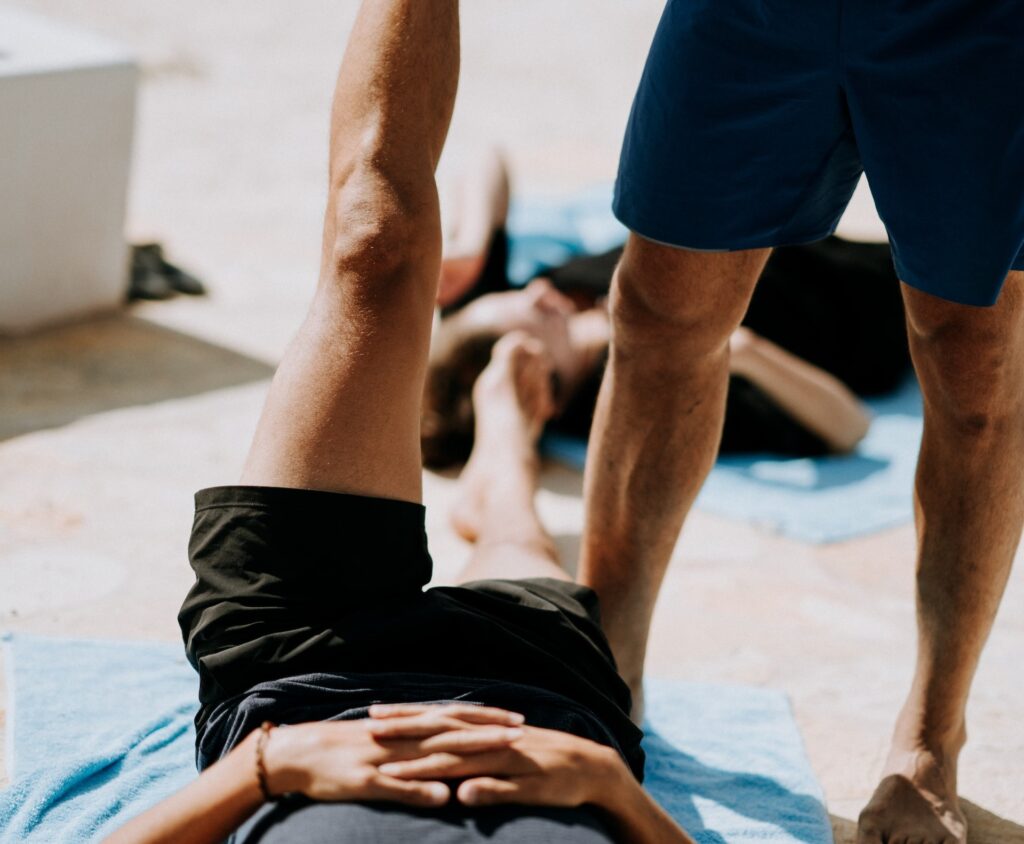Do you ever experience intense pain and stiffness in your lower back? You’re not alone! Millions of people suffer from pinched nerves in the lower back, which can really put a damper on daily activities. Luckily, there are some exercises that can help alleviate symptoms and promote healing.
In this article

A pinched nerve is when there’s too much pressure on a nerve, causing it to get compressed. This can happen for various reasons, like herniated discs, spinal stenosis, or sciatica. It’s important to recognize the symptoms of a pinched nerve and to understand how exercises can help manage it effectively.
Best exercises for a pinched nerve in the lower back
Pinched nerves in the lower back can cause sharp pain, numbness, and other uncomfortable symptoms. There are several exercises and techniques that can help to relax and alleviate the pain caused by a pinched nerve in the lower back. Here are some exercises that can help:
1. Nerve Glides
Nerve glides or neurodynamics exercises gently floss and stretch the irritated nerve to reduce sensitivity, pain, and swelling. The technique involves slow and controlled movements of specific body parts to stretch irritated nerves and promote their smooth and regular movement.
How to do it:
Sciatic Nerve Glide in Supine Position:
- Lie on your back and raise one leg, taking hold of it behind the knee.
- Start with the raised knee bent, then slowly straighten it, stopping when you feel a stretch down the back of your thigh and knee.
- Keep your toes pulled back towards your head so the sole of your foot is facing up to the ceiling.
Sciatic Nerve Glide for sciatic pain:
- Lie on your back.
- Grab the backside of the thigh of the leg you feel sciatic pain in and gently pull it into a tabletop position so that your knee is over your hip.
- Alternate between flexing your foot as you lower your heel down towards your buttocks and pointing your toes as you extend your leg up towards the ceiling.
2. Stretching your hip flexors
Stretching your hip flexors can be beneficial for a pinched nerve in the lower back.
How to do it:
Begin in a standing position, take a step backward with one foot, and kneel down on your back knee. You should feel your weight shift to your back hip, which is where you will feel the stretch.
[Related: 1 Unusual Psoas Stretch That Will Relieve Your Back Pain]
3. Corner Stretch
How to do it:
Stand facing a corner and stagger your feet slightly. Bend your elbows and raise your arms to shoulder height. Place one forearm on each wall. Slowly lean your body toward the corner until you feel a nice stretch along the front of your chest. Hold for 20 seconds and then back away from the wall. Repeat three times.

4. Straight-leg raises
Straight-leg raises are a low-impact exercise that may help stretch the lower back muscles and reduce pressure on the nerve.
How to do it:
Lie on your back with your legs straight, and then slowly raise one leg until it’s perpendicular to the floor. Hold for a few seconds, then lower it back down. Repeat on the other side.
5. Knee-to-chest stretches
Knee-to-chest stretches can help to stretch the lower back muscles and reduce tension on the nerve. Begin by lying on your back with your knees bent and your feet flat on the floor.
How to do it:
Bring one knee up to your chest and hold it there with both hands. Hold the stretch for a few seconds, then lower your leg back down. Repeat on the other side.
[Related: Best Morning Stretch Routines to Revitalize Your Day]
Please remember to perform these exercises gently and consult with a healthcare professional before starting any new exercise routine, especially if you have an existing condition or are experiencing pain.
What is a pinched nerve?
A pinched nerve is a condition where a nerve is compressed or squeezed by surrounding tissues or structures, leading to pain, numbness, tingling, or weakness in the affected area. Pinched nerves can occur anywhere in the body but are most common in the neck, lower back, and wrists. One common cause of pinched nerves is a herniated disk in the spine, which can press on the nerves that run through the spinal cord.
Cervical radiculopathy, also known as a pinched nerve in the neck, can cause radiating pain, weakness, and numbness in the arms or hands due to compression of nerve roots in the neck. The symptoms of a pinched nerve can include numbness or decreased sensation in the area supplied by the nerve, sharp, aching, or burning pain that may radiate outward, tingling or pins and needles sensations, muscle weakness in the affected area, and frequent feeling that a foot or hand has “fallen asleep”.
Most cases of pinched nerves can be treated with nonsurgical methods such as rest, physical therapy, and medication. However, in severe cases, surgery may be necessary to relieve the compression on the affected nerve.
What might cause a pinched nerve in the back?
A pinched nerve in the back can be caused by various factors. One of the most common causes is a herniated disk in the lower spine, which can put pressure on a nerve root and lead to pain that radiates down the back of the leg (sciatica).
Additionally, a pinched nerve in the back can also be caused by nearby tissue or bone compressing a nerve in the lower part of the spine, which may cause pain, numbness, burning, or tingling in the lower back, legs, and feet.
Pinched nerves in the back can affect several areas of the body, depending on the location of the compressed nerve. For example, a pinched nerve in the cervical spine (neck) can cause a stiff neck, and the pain and numbness can affect the shoulder and arm.
A pinched lumbar nerve in the lower back can cause pain in the back, hips, buttocks, and legs, while thoracic radiculopathy can cause pain in the chest area.
Treatment options for a pinched nerve in the back depend on the severity of the condition. Minor cases may be treated with exercises and pain relievers, while more severe cases may require physical therapy or surgery. It is important to seek medical attention if the pain is severe or lasts for an extended period of time.
Precautions when exercising with a pinched nerve
Exercising with a pinched nerve can be painful and potentially cause further damage to the nerve. Therefore, it is important to take precautions when exercising with a pinched nerve. If you have been diagnosed with a pinched nerve, it is recommended first to rest the affected area and avoid any activities that cause or aggravate the compression. Depending on the location of the pinched nerve, you may need a splint, collar, or brace to immobilize the area.
When it comes to exercise, it is best to avoid activities that put pressure on the affected nerve. For example, if you have a pinched nerve in your wrist, you should avoid exercises that require repetitive wrist movements such as push-ups or planks.
Additionally, it is recommended to modify exercises to avoid aggravating the pinched nerve. This can include reducing the intensity or duration of the exercise, using lighter weights, or changing the position of the body to alleviate pressure on the affected nerve.
Check out this video called “How to Get Rid of a Pinched Nerve” from the “SpineCare Decompression and Chiropractic Center” Youtube channel.
Frequently asked questions (FAQ)
Got more questions about these exercises for a pinched nerve in the lower back? Check out some commonly asked questions about this topic below.
Can exercise actually help relieve pain from a pinched nerve in the lower back?
Yes, exercise can indeed help alleviate pain caused by a pinched nerve in the lower back. Engaging in targeted stretches and strengthening exercises can improve flexibility, support spinal structures, and reduce pressure on the affected nerve. However, it’s essential to consult a healthcare professional before starting any exercise routine, as they can guide you on the appropriate exercises tailored to your specific condition.
How often should I perform exercises for a pinched nerve in my lower back?
The frequency of exercising for a pinched nerve in the lower back may vary depending on the severity of your condition and the guidance provided by your healthcare professional. Generally, it’s recommended to perform stretches and exercises 2-3 times per day, with each session lasting around 15-20 minutes. It’s crucial to listen to your body and adjust the frequency and intensity of your exercises as needed.
Are there any exercises I should avoid if I have a pinched nerve in my lower back?
Certain exercises can aggravate a pinched nerve in the lower back, so it’s essential to avoid high-impact activities or movements that cause pain. Steer clear of exercises that involve excessive twisting, bending, or lifting heavy weights. Always consult a healthcare professional, such as a physical therapist or chiropractor, before starting any exercise program, as they can guide you on the safest and most effective exercises for your specific situation.
Final Word
Have you learned new ways to manage and alleviate the discomfort caused by a pinched nerve in your lower back? By recognizing the symptoms, understanding the causes, and implementing the appropriate exercises, you can make a significant difference in your recovery process.
If you found this article helpful, why not share it with your friends? And don’t forget to check out my other blog posts for more tips on staying healthy and feeling your best!
